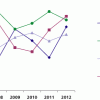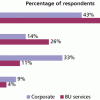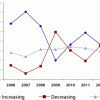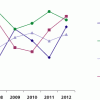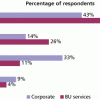Business Transformation Requires Transformational Leaders
Leadership and teaming skills are front and center in times of rapid change. Meet today’s constant disruption head on with expert guidance in leadership, business strategy, transformation, and innovation. Whether the disruption du jour is a digitally-driven upending of traditional business models, the pandemic-driven end to business as usual, or the change-driven challenge of staffing that meets your transformation plans—you’ll be prepared with cutting edge techniques and expert knowledge that enable strategic leadership.
Recently Published
A year ago, most budget researchers like myself were hopeful that the budgets for the coming years would reflect an economic stability -- where businesses and nonprofits alike could begin rebuilding as unemployment concerns started fading away. Yet as the new year dawned, however, it became obvious that world economies had not turned the corner.
This survey, our seventh annual IT budgeting survey, examined general and specific aspects of IT budgeting in 69 organizations, 48% of which are headquartered in North America; of the remainder, 23% are headquartered in Europe, 17% in Asia, 4% in each of Australia/Pacific and South America, and 3% in Africa and the Middle East.
This issue is the seventh installment in our annual series on IT budgeting. Together, our authors have given us keen insight into both the current practice of the IT budgeting discipline and the underlying assumptions that inform IT budgeting practice, as well as a solid "big picture" understanding of both the past and the future.
Budgets are plans that reflect beliefs about the future of an organization. While couched in monetary terms associated with an organization's specific industry, the gestalt of the message is one that transcends all lines of business. In short, internal financial reports as well as economic news delivered via the media can be seen across a range of optimistic and pessimistic views from the budget planner's desk.
This has been an interesting seventh year, particularly with the analysis of corporate compared to BU services organizations. Overall, the key point remains: IT's costs is an important component of IT management, in general, and IT governance, in particular. CIOs and business managers are encouraged to pay close attention to the patterns of their budgeting practices and the issues of how costs are identified and assigned to business units. These are relevant to the entire process of understanding the value of IT and its implications for the company as a whole.



